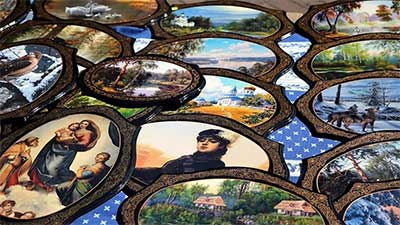Daily-current-affairs /
22 Oct 2020
Life in Miniature Project : Daily Current Affairs

Life in Miniature Project
Why in NEWS ?
- Union Minister of State for Culture and Tourism (I/C) Shri Prahlad Singh Patel virtually launched “Life
in Miniature” project, a collaboration between the National Museum, New Delhi, Ministry of Culture,
and Google Arts & Culture.
ABOUT
- In this initiative several hundred miniature paintings from the National Museum, New Delhi can be
viewed online on Google Arts & Culture by people around the world in a new project titled “Life in
Miniature.”
- The project uses technologies like machine learning, augmented reality and digitization with high-
definition robotic cameras, to showcase these special works of art in a magical new way.
- On the Google Arts & Culture app, online viewers can experience the first Augmented Reality-
powered art gallery designed with traditional Indian architecture, and explore a life-size virtual space
where you can walk up to a selection of miniature paintings.
- Another highlight of the launch is the application of Machine Learning-based algorithms to the corpus
of paintings being brought online, so that users can explore these miniature marvels guided by
Artificial Intelligence.
- If a single miniature painting is a rare joy to behold, this experience – named “Magnify Miniatures” –
which enables online users to explore multiple artworks simultaneously is a new experience.
NATIONAL MUSEUM
- The National Museum in New Delhi, also known as the National Museum of India, is one of the largest
museums in India established in 1949.
- In 1946, the idea of building a National Museum for India was proposed by the Gwyer Committee. Sir
Maurice Gwyer, the former Chief Justice of India and Vice Chancellor of Delhi University, headed the
Committee.
- It also houses the National Museum Institute of History of Art, Conservation and Museology on the first
floor which was established in 1983 and now is a deemed to be University since 1989, and runs Masters
and Doctoral level courses in History of Art, Conservation and Museology.
CONCLUSION
- Technology and art are universal and complementary. Yet, most people do not often think about how
they intersect and can be used to enhance one another. This syndication of cultural and artistic heritage
with technological innovation not only preserve this but also protects and promote this vast historical
assets which ought to be witnessed by the future generation.








